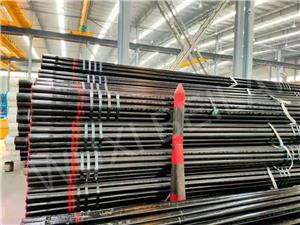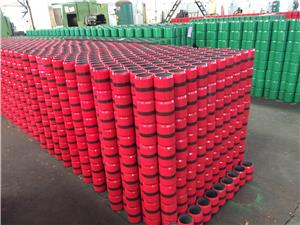Do you understand the mechanical properties of seamless steel pipes?
The mechanical properties of seamless steel pipes are important indicators to measure their quality and performance. These properties mainly depend on the chemical composition and heat treatment system of the steel pipes. The mechanical properties of seamless steel pipes usually include the following aspects:
1. Tensile strength (σb)
Definition: Tensile strength refers to the maximum tensile force that a material can withstand during the tensile process. It reflects the resistance of the steel pipe when subjected to tensile loads. Tensile strength is the stress (σ) obtained by dividing the maximum force (Fb) the sample endures when it breaks during the stretching process by the original cross-sectional area (So) of the sample. The unit is N/mm² (MPa ).
Importance: Tensile strength is a key parameter to measure the strength of seamless steel pipes. High tensile strength means that the steel pipe has a higher safety margin when bearing tensile loads.
2. Definition of yield strength (σs)
Yield strength refers to the stress value at which a material begins to undergo significant plastic deformation when subjected to external forces. For metal materials with yield phenomenon, the stress at which the specimen can continue to extend without increasing the force (remaining constant) during the tensile process is called the yield point. Yield strength is an important parameter to evaluate the mechanical properties of seamless steel pipes, which determines the stability of steel pipes under pressure or load. Classification: The yield strength can be divided into upper yield point (σsu) and lower yield point (σsl). The upper yield point is the maximum stress before the yield occurs and the force decreases for the first time. The lower yield point is the minimum stress in the yield stage regardless of the initial instantaneous effect. 3. Elongation (δ) definition: elongation refers to the percentage of the length increased by the standard distance after the specimen is pulled and the length of the original standard distance in the tensile test. Elongation is an important index to measure the plasticity of seamless steel pipe, and high elongation means that the steel pipe can produce large deformation and is not easy to break when stretched. Standard: In general, the elongation of seamless steel pipe needs to meet certain standards, such as ≥25%.
3. Elongation (δ) definition
Elongation refers to the percentage of the length increased by the standard distance after the specimen is pulled and the length of the original standard distance in the tensile test. Elongation is an important index to measure the plasticity of seamless steel pipe, and high elongation means that the steel pipe can produce large deformation and is not easy to break when stretched. Standard: In general, the elongation of seamless steel pipe needs to meet certain standards, such as ≥25%.
4. Section shrinkage (ψ)
Definition: section shrinkage refers to the percentage of the maximum reduction of the cross-sectional area at the reduced diameter and the original cross-sectional area after the specimen is pulled off in the tensile test. The section shrinkage rate is also an important index to measure the plasticity of seamless steel pipe, which reflects the reduction of the cross-sectional area of the steel pipe when it is stretched. Standard: The section shrinkage rate of seamless steel pipe also needs to meet certain standards, such as ≥5%.
5. Hardness definition
Hardness refers to the ability of metal materials to resist hard objects to compress the surface. According to the different test methods and application range, the hardness can be divided into Brinell hardness, Rockwell hardness, Vickers hardness and other types. There are three kinds of Brinell, Rockwell and Vickers hardness commonly used for pipes. Standard: The hardness of seamless steel pipe needs to be controlled according to the specific requirements of use, such as the hardness value of no heat treatment generally does not exceed a specific value (such as ≤156HB).




